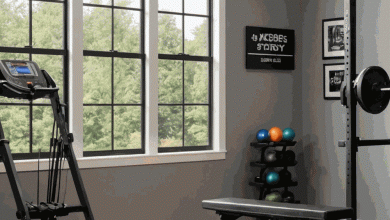How To Workout Through Injury

Protein Intake: My Experience with EAAs
Let’s talk protein intake. As a fitness enthusiast, it’s essential to fuel my body with the right nutrients. For a while, I focused on consuming enough protein by taking essential amino acids (EAAs) three times a day. But recently, I’ve made some changes to my routine. As I started increasing my protein intake through whole foods, I scaled back on EAAs. Now, I take them once or twice a day if my protein intake falls slightly below my target. However, now that I’m in a calorie deficit phase, I’ve returned to taking EAAs three times a day, as studies suggest they can be beneficial during this period.
The Challenges of Traveling and Staying Fit
Traveling can throw a wrench in anyone’s fitness routine. Trust me, I know. I’m about to embark on a trip, and let me tell you, it’s going to be a challenge. Long plane rides, disrupted sleep patterns, and limited food options in airports can make it tough to stick to a healthy lifestyle. But I’m determined to navigate this journey successfully.
The Physical Demands of Race Car Driving
Ever wondered how physically demanding race car driving can be? Well, let me tell you it’s no joke! Here’s the funny thing I always seem to schedule leg day before a long plane ride. Talk about a bad idea! But despite the tight hips and lower back pain, I can’t help but be excited about the thrill of race car driving. Just imagine the adrenaline rush and the physical exertion it demands. It’s like a full-body workout, and yes, I’ve even seen race car drivers lose 10-15 pounds in a single race!
The Physicality of Professional Sports
Professional sports require athletes to be in peak physical condition. It’s fascinating to see how genetics, talent, and hard work all come together to create phenomenal athletes. Some individuals are born with exceptional genes, giving them a head start in the race to success. But it’s the ones who combine their genetic advantages with rigorous training and dedication that become true superstars. Sports like race car driving exemplify this combination of natural talent, athleticism, and mental agility.
Balancing Science and Real-World Application in Fitness
When it comes to fitness, it’s essential to strike a balance between scientific research and real-world application. I often find myself frustrated with those who dismiss practical experience in favor of scientific studies alone. The truth is, while studies provide valuable insights, they don’t capture the complexities of individual variations, real-life challenges, and the immeasurable factors that impact our fitness journeys. It’s crucial to embrace both the science and the wisdom gained from personal experiences when striving for optimal health and fitness.
The Frustration of Dealing with Injuries in Training
Injuries are the bane of every fitness enthusiast’s existence. They disrupt our progress, hinder our workouts, and leave us feeling frustrated. Recently, I’ve been grappling with a recurring issue in my quad and hip flexor area. It’s a strange sensation like a muscle popping and releasing. Although it hasn’t caused significant damage, it’s enough to remind me to be careful and adapt my training accordingly. Pushing through injuries isn’t wise; it’s essential to listen to our bodies and make the necessary modifications for optimal recovery.
Adjusting Workout Plans to Accommodate Injuries
When injuries strike, it’s crucial to adjust our workout plans to promote healing and prevent further damage. In my case, I’ve learned to stay away from heavy quad-focused exercises for the time being. Instead, I’m focusing on lateral movements, walking lunges, and other posterior chain exercises. It’s a temporary change, but it allows me to maintain my progress while giving my injury the time it needs to heal. Sometimes, we need to shift gears and find alternative exercises that work around our limitations.
The Importance of Dynamic Warm-ups and Mobility Work
I cannot stress enough the importance of dynamic warm-ups and mobility work. These targeted exercises prepare our bodies for intense training sessions and help prevent injuries. Personally, I’ve found that combining dynamic movements with stretching and self-massage using a lacrosse ball provides relief and improves flexibility. But it’s essential to tailor these warm-ups to our specific needs, especially when dealing with tight muscles or lingering injuries. Understanding our bodies and listening to what they need is key to a successful workout routine.
Navigating Setbacks and Staying Motivated in Training
Setbacks are an inevitable part of any fitness journey. How we handle them determines our long-term success. It’s easy to feel discouraged when plans don’t go as expected or when injuries slow us down. But setbacks should never be a reason to give up. Instead, we should reevaluate our goals, make necessary adjustments, and stay motivated. Remember, even with setbacks, we can continue making progress by focusing on other aspects of our journey, such as nutrition and mental well-being.
Understanding the Impact of Diet on Aesthetics
We often underestimate the impact of diet when it comes to achieving our desired aesthetics. Our bodies are a reflection of what we consume. During my transition from a bulk to a cutting phase, my diet plays a crucial role. It’s normal to feel hungry during calorie restriction, especially when our metabolism is revving up. However, learning to embrace this hunger and making mindful food choices is vital. By striking the right balance between caloric intake and macronutrients, we can sculpt our physique even when faced with dietary restrictions.
Adapting Workouts During Cutting Phases
Transitioning into a cutting phase requires adjustments to our workout routines. While we might not be pushing for maximum strength gains, maintaining muscle mass is still a top priority. Even during travel, we can incorporate lighter workouts, such as bodyweight exercises and higher rep ranges. This ensures we continue challenging our muscles while also prioritizing mobility and stability. Additionally, increasing daily activity levels, such as steps taken, can help offset any accidental calorie overconsumption and contribute to maintaining our progress.
Overcoming Hunger During Calorie Restriction
Calorie restriction can bring about feelings of hunger and cravings. However, it’s important to remember that hunger doesn’t equate to starvation. Our bodies are adaptable and resilient. When we experience hunger pangs during our cut, it’s a sign that our metabolism is utilizing stored fat for energy. So, the next time you’re watching Netflix, appreciate the fact that your body is burning fat while you enjoy your favorite show.
Motivating Yourself to Stay on Track with Diet
Sticking to a diet plan can be challenging, especially when cravings strike. To stay motivated, I remind myself of the progress I’ve already made and the results I want to achieve. Hunger is temporary, but the satisfaction of reaching my goals will last much longer. By visualizing the physique I desire and focusing on the positive changes happening within my body, I stay motivated even during moments of temptation.
The Benefits of Mental Imagery during Workouts
Mental imagery plays a powerful role in our workouts. I’ve found that visualizing myself lifting heavy weights or performing movements with perfect form enhances my performance and boosts my motivation. By vividly imagining success, I create an environment that encourages my body to push beyond its limits. So the next time you head to the gym, try mentally rehearsing your lifts or picturing your ideal physique. You might just be surprised at the difference it makes!

